On our last day in New Orleans I got to redeem an early birthday gift from R.: a
New Orleans Culinary History and Tasting Tour of the French Quarter!
The tour started at
Antoine's Restaurant, a family-owned institution in New Orleans dating back to 1840! We had a sample of the
Gumbo (delicious!), learned a bit about the history of Antoine's, and toured the kitchen as well as a few of the 14 elegant and unique dining rooms in the restaurant, many of which were lined with framed photos of celebrities or krewe kings and other memorabilia. I have never seen a restaurant with so much history!
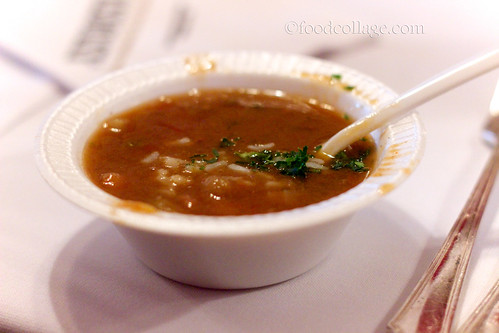 |
| Gumbo sample at Antoine's |
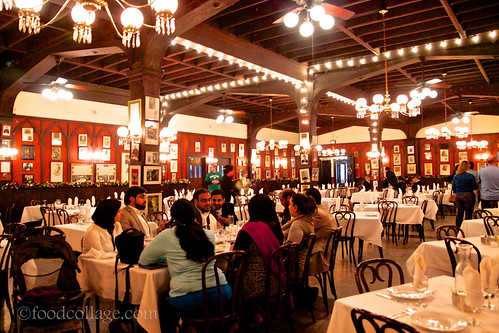 |
| One of the dining rooms at Antoine's |
 |
| Another dining room at Antoine's |
 |
| Taking a peek into the wine cellar at Antoine's |
We then crossed the street over to
Leah's Pralines. This was a quick stop, but we got to sample some brittle while there, and each of us took home a praline.
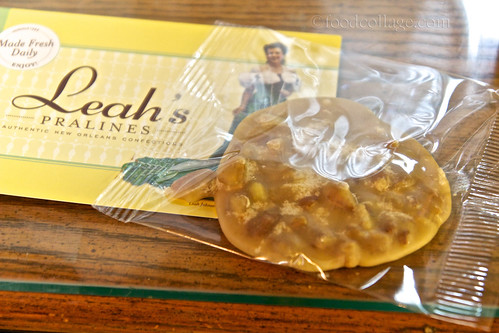 |
| Praline from Lean's Pralines |
We then headed over to the Royal Sonesta Hotel where we sampled the
Turtle and Sherry Soup from
Desire Oyster Bar. It was savory! We also learned that most turtle soup contains only a small amount of turtle, with the remaining meat being typically veal or beef.
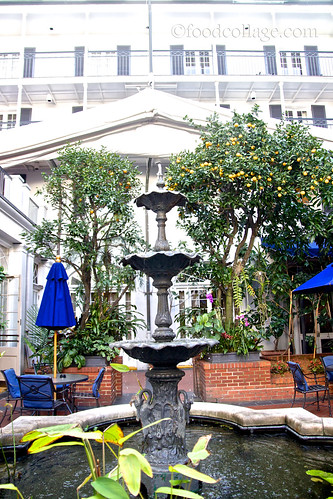 |
| The Royal Sonesta Hotel courtyard |
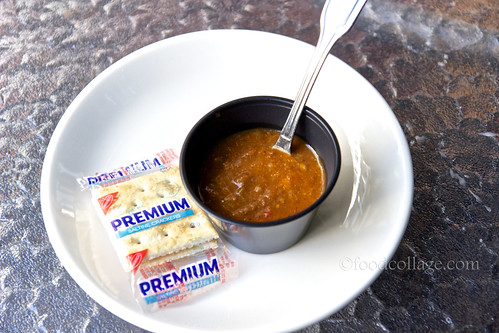 |
| Turtle and Sherry Soup from Desire Oyster Bar |
Our next stop was
Arnaud's and its casual version,
Remoulade, another family-owned restaurant with much interesting history. We first sampled the scrumptious
Shrimp Remoulade, which is served with a dressing that tastes like horseradish, but is actually a creole mustard for which Arnaud's is famous. Afterwards, we toured Arnaud's and heard interesting stories about one of the former owners, Germaine Wells, who was a party girl through and through and helped make Arnaud's famous all over the world. In New Orleans, she was also a Carnival queen for 22 years, and created an Easter parade just so she could show off all her hats. There is even a "costume museum" upstairs featuring Germaine's hats and Carnival costumes! What a character!
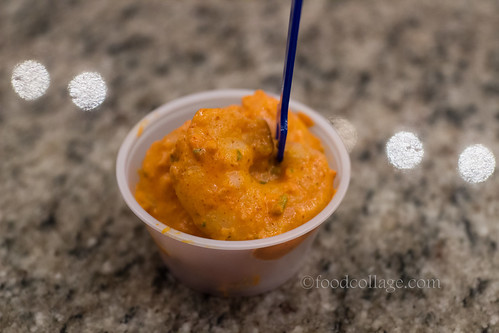 |
| Shrimp Remoulade at Arnaud's/Remoulade |
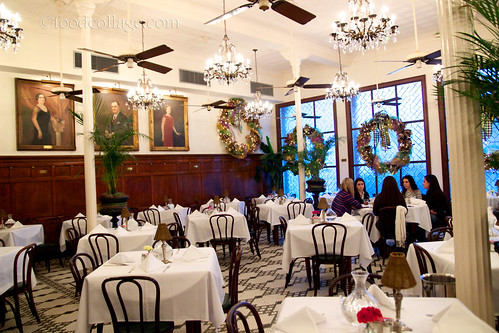 |
| Arnaud's Restaurant |
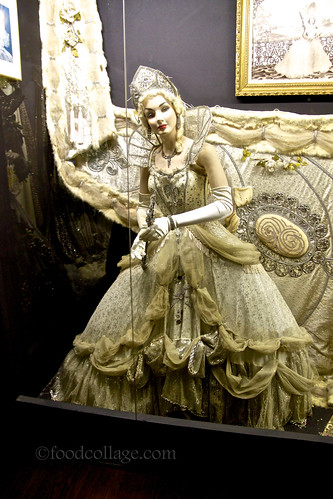 |
| At Germaine Wells' costume museum |
On our way to the next stop, we snuck into
Restaurant R'evolution, a fairly new trendy eatery that's been gathering a lot of buzz. Our tour guide, Annette, called this unofficial stop a "lagniappe"- a Louisiana French term that means "a little something extra." We didn't get to sample any food, but it was sure interesting to marvel at the modern decor of the dining room - a stark contrast to the likes of Antoine's and Arnaud's where we had just been. The French Quarter truly has something for everyone.
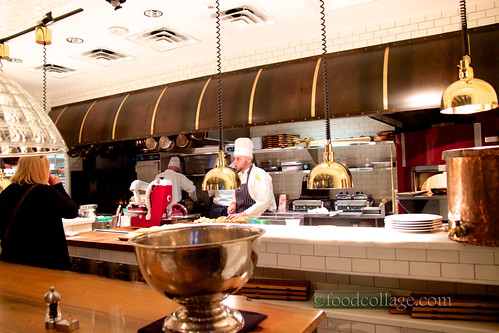 |
| Open kitchen at Restaurant R'evolution |
We continued our tour at
La Divina Cafe e Gelateria, a small gelato and sandwich shop with some patio seating, where we sampled a
Muffaletta and some homemade artisan
Gelato.
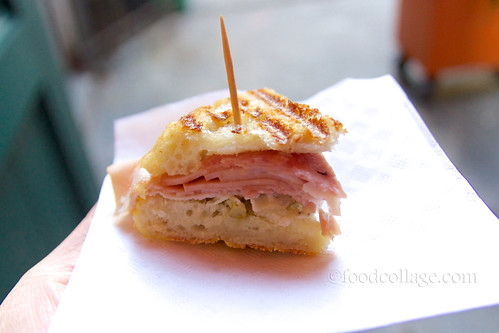 |
| Muffaletta sample at La Divina Cafe e Gelateria |
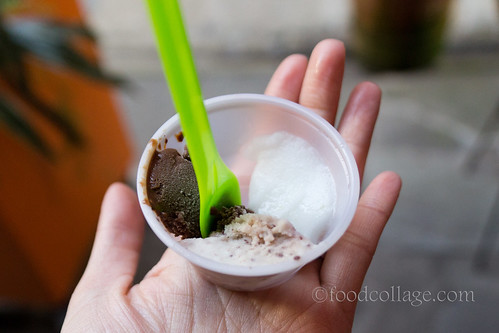 |
| Gelato sample at La Divina Cafe e Gelateria |
We then moved on to
Tujaques, another vintage restaurant (over 150 years old!) in the neighborhood. Here, we sampled the
Brisket, which was tender and very well done.
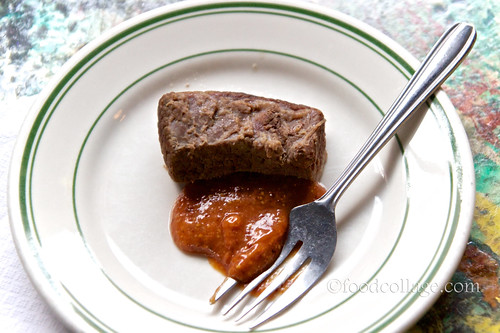 |
| Brisket at Tujaques |
Finally, we came to our last stop:
Creole Delicacies. The front, indoor space is a shop featuring family-made Cajun and Creole goodies and other souvenirs; the back is a courtyard where the lively and competent Saundra served us
Mardi Gras Dip (not pictured) and
Red Beans and Rice, and showed us all about how to make a Cajun
Roux - a cooking base and thickening agent used in dishes like gumbo and étouffée. To make a roux, one heats oil, flour, along with the "holy trinity" of celery, onion, and bell pepper (with the "Pope" being garlic that is sometimes added as well), and must keep stirring the pot
nonstop to avoid burning it until it reaches the desired darkness. A dark roux can be almost black in color! But, the perfect roux is very hard to achieve, as it can be a matter of an instant for the roux to go from perfectly whatever-color-it-is to a pot of royally burned mess - in which case you must start all over.
 |
| Red Beans and Rice sample at Creole Delicacies |
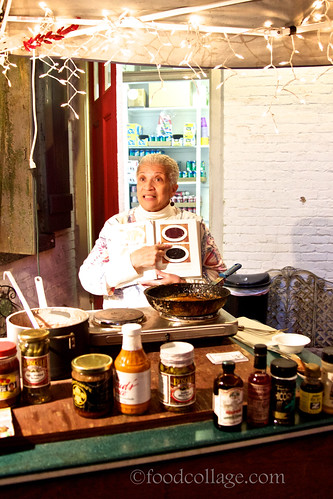 |
| Saundra demonstrates the roux |
The sky was dark by the time the tour concluded. The experience was great fun and I got to learn some interesting facts about New Orleans and its cuisine. Our original tour guide actually didn't make it for some reason, and Annette, who was in training and was there to shadow our tour, stepped up and did a very nice job leading the tour despite being put on the spot that way. Overall, this tour was an enjoyable experience and I'm sure glad we did it!
















